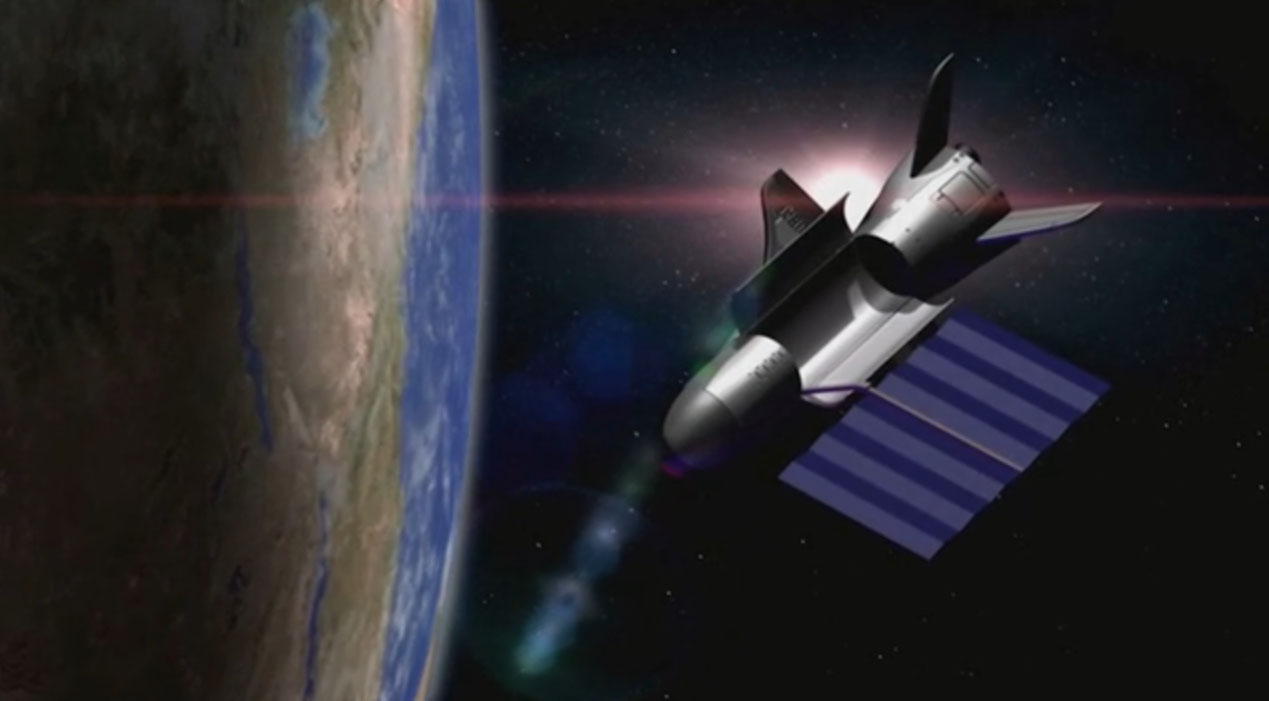The U.S. Air Force's X-37B space plane has now been circling Earth for more than 600 days on its latest mystery mission.
The reusable robotic vehicle, which looks like a miniature version of NASA's space shuttle orbiters, launched atop a SpaceX Falcon 9 rocket from NASA's Kennedy Space Center in Florida on Sept. 7, 2017.
As of today (April 30), the space plane has been aloft for 601 days, on a mission known as Orbital Test Vehicle 5 (OTV-5) because it's the fifth flight of the X-37B program.
Related: The X-37B Space Plane: 6 Surprising Facts
It's unclear what exactly the spacecraft is doing up there. X-37B missions are classified, and Air Force officials tend to speak of project goals in general terms, as this excerpt from the X-37B fact sheet shows: "The primary objectives of the X-37B are twofold: reusable spacecraft technologies for America's future in space and operating experiments which can be returned to, and examined, on Earth."

Still, the Air Force does divulge some payloads flying on X-37B missions. For example, we know that OTV-5 includes the Advanced Structurally Embedded Thermal Spreader experiment (ASETS-II), which is measuring the performance of electronics and oscillating heat pipes in the space environment.
The Air Force has at least two X-37B vehicles, both of which were built by Boeing. Each space plane is 29 feet (8.8 meters) long and 9.6 feet (2.9 m) tall, with a wingspan of almost 15 feet (4.6 m). The solar-powered spacecraft have payload bays about the size of a pickup-truck bed.
Get the Space.com Newsletter
Breaking space news, the latest updates on rocket launches, skywatching events and more!
The X-37B launches vertically and lands horizontally on a runway, like the space shuttle orbiters did.
OTV-5 is not, so far, the longest-duration X-37B mission, though the outing will earn that distinction if the established pattern holds: Each OTV flight has lasted longer than its predecessors:
- OTV-1 launched on April 22, 2010, and ended on Dec. 3, 2010 (224 days in space).
- OTV-2 began March 5, 2011, and landed on June 16, 2012 (468 days).
- OTV-3 launched on Dec. 11, 2012, and came down on Oct. 17, 2014 (675 days).
- OTV-4 lifted off on May 20, 2015, and landed May 7, 2017 (718 days).
- US Air Force's Secretive X-37B Space Plane (Infographic)
- In Photos: SpaceX Launches X-37B Space Plane, Lands Falcon 9 Rocket
- Gallery: Declassified US Spy Satellite Photos & Designs
Mike Wall's book about the search for alien life, "Out There" (Grand Central Publishing, 2018; illustrated by Karl Tate), is out now. Follow him on Twitter @michaeldwall. Follow us on Twitter @Spacedotcom or Facebook.
Join our Space Forums to keep talking space on the latest missions, night sky and more! And if you have a news tip, correction or comment, let us know at: community@space.com.

Michael Wall is a Senior Space Writer with Space.com and joined the team in 2010. He primarily covers exoplanets, spaceflight and military space, but has been known to dabble in the space art beat. His book about the search for alien life, "Out There," was published on Nov. 13, 2018. Before becoming a science writer, Michael worked as a herpetologist and wildlife biologist. He has a Ph.D. in evolutionary biology from the University of Sydney, Australia, a bachelor's degree from the University of Arizona, and a graduate certificate in science writing from the University of California, Santa Cruz. To find out what his latest project is, you can follow Michael on Twitter.









